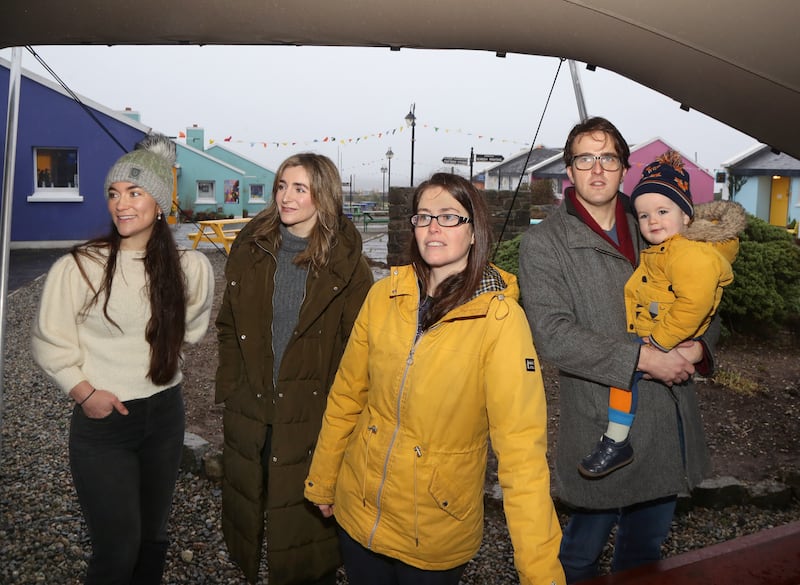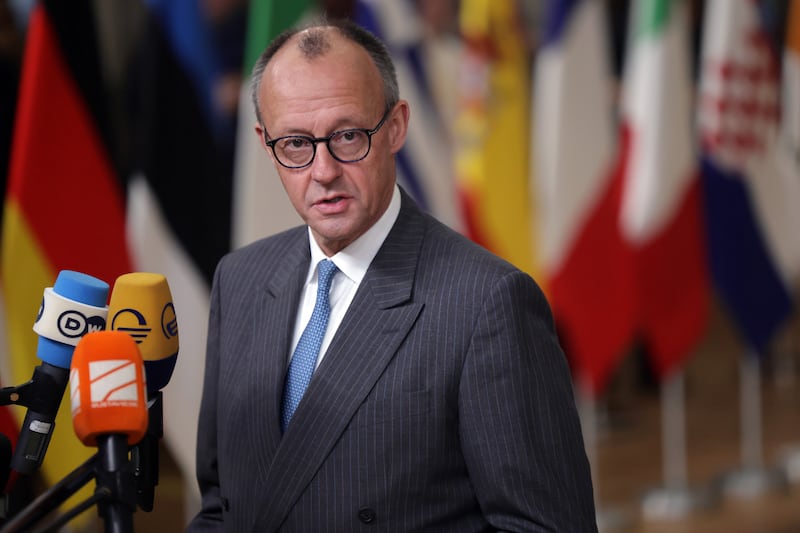It’s 50 years since I settled in Cois Fharraige, part of the South Connemara Gaeltacht. From Tipperary, I had yearned to be part of a community for which Irish was not just a national symbol, but an everyday language of communication. That’s what I found in Cois Fharraige, the narrow coastal area which stretches out from the western suburbs of Galway city along the northern shore of Galway Bay. In spite of much lip service, it had been neglected by successive governments.
When I arrived in Cois Fharraige in 1973 there was no running water. To make a cup of tea required a trip to the well. Some of the local pubs had no proper toilet facilities, except for out the back, where you ran the risk of being ensnared in briars and stung by the nettles. There were little or no sports facilities, no playing pitches. The local football team, Cumann Micheál Breathnach, trained on the beach, when the tide was out, denied the luxury of being able to bounce the football on a grass surface. Employment for men was scarce, most of them living off social welfare or seasonal emigration to supplement meagre earnings from land or fishing.
But things were beginning to change for the better, at least economically. The local Irish college, Coláiste Lurgan, set up in 1966, had given a boost to the local economy and Irish-speaking families. As a result, some parents could now afford to send their children to third-level colleges, to qualify mainly as teachers. The Lemass government’s response to the emigration crisis in the Gaeltacht was to enable the State agency, Gaeltarra Éireann, to attract outside investment in order to create manufacturing jobs in the Gaeltacht, in an attempt to halt or reduce emigration. The first factory, making tiles from Connemara marble, employing mainly men, was set up in 1968.
Tim Robinson’s Little Gaelic Kingdom of South Connemara had a population of more than 10,000 in 1971, of whom over 90 per cent were Irish speakers. English had yet to establish a foothold. People of all age groups spoke Irish habitually as their everyday community language. English was of course necessary for most dealings outside the Gaeltacht, even with State bodies. A significant number of parents of 50 years ago, anxious that their children did not face the stigma and shame of not being fluent in English when they left the Gaeltacht, began to speak English to their children, while continuing to speak Irish among themselves. One could hardly blame them: a lot of that generation had emigrated with inadequate English and, as a result, experienced mockery, prejudice and ridicule, be it in Dublin, Galway, Boston or London. They understandably didn’t want their children to suffer the same linguistic insecurity.
READ MORE
Exciting time
It was an exciting time to arrive in Cois Fharraige 50 years ago. The Gaeltacht-educated younger generation had a few years previously set up Gluaiseacht Chearta Sibhialta na Gaeltachta (The Gaeltacht Civil Rights Movement), a very effective pressure group which agitated for a Gaeltacht community radio station among other things, resulting in the establishment of Raidió na Gaeltachta in 1972, its most important achievement. There was a new energy and vibrancy in the air. Community-run group water schemes brought an end to the era of going to the well. Sports fields were developed. Young people now wanted to stay and settle, emigration becoming a choice rather than the only option for those who wanted to make a life for themselves.
[ Irish language advocates float plan to create 9,000 jobs in Gaeltacht areasOpens in new window ]
On the employment front, Gaeltarra Éireann, under the able and dynamic stewardship of Cathal Mac Gabhann, was building hotels, factories and even houses. Emigrants were returning to establish new homes with help from Roinn na Gaeltachta, bringing with them their children and spouses, many of whom did not speak Irish unfortunately – which put pressure on the language. The strategy yielded rapid results, however, and the 1979 census figures showed that the population of the Irish-speaking Gaeltacht area west of An Spidéal had risen by 7.5 per cent between 1971 and 1979, a turnaround from the fall of 17 per cent between 1966 and 1971.
There was a downside. The use of the Irish language was in decline in most Gaeltacht areas. The official policy seemed to be that while jobs were created to keep people from emigrating, the language would look after itself. Warnings by sociolinguists were largely ignored.
There is evidence that the younger generation of Irish speakers, those in their 20s, are less inhibited than an older age cohort about using Irish
An extensive study of the prospects for Irish in the Gaeltacht by the English geographer Reg Hindley, published in 1990, got a mixed reception, partly because of its title, The Death of the Irish Language. Hindley recognised that the new challenge in South Connemara/Aran Islands and in the other “little Gaelic Kingdoms” of Corca Dhuibhne in Kerry and North West Donegal around Gaoth Dobhair was how Irish could survive as an everyday language of communication within the community, if the Irish speakers were now effectively bilingual? B’shin í an cheist mhór.
A comprehensive study
A Comprehensive Linguistic Study of the Use of Irish in the Gaeltacht Areas reported its findings in 2007 and made some recommendations. One of the most important of these was that three different categories of Gaeltacht communities be officially designated for the purpose of language planning: “A” being the strongest Irish-speaking communities and “C” the weakest, with “B” being places in between, neither strong nor particularly weak, like Árainn Mhór in Donegal and the Ráth Chairn colony in Co Meath.
The categorisation would enable State bodies to differentiate between types of Gaeltacht areas when formulating and implementing language-planning strategies, as well as incentivising communities to seek promotion and avoid demotion, if you like. Unfortunately the criteria and categories were conveniently ignored and never used, even though an extensive language planning scheme was set up.
Another of the main recommendations in the Comprehensive Linguistic Study was a new Scéim Labhairt na Gaeilge which would provide a financial incentive to Gaeltacht parents to encourage them to speak Irish to their children from birth. The old scheme only kicked in at six years of age – far too late to influence the decision as to whether a child would learn Irish as a first language. Instead of implementing the change recommended, the existing scheme was abolished entirely in 2011 – with disastrous consequences. The census results show that the percentage of three- to four-year-olds in Gaeltacht areas using Irish on a daily basis in the home has fallen from 21.1 per cent in 2011 to 15.5 per cent in 2022. Now only one in 10 Gaeltacht children in the preschool age group (three to four years) was reported in the 2022 Census as being fluent in Irish, or speaking Irish “Very well”, to use the census term.
A recent study, as yet unpublished, showed that in the strongest Gaeltacht areas, while 83.6 per cent of parents were native or fluent Irish speakers, only 46.3 per cent of children said Irish was the language spoken at home.
Housing in the Gaeltacht and BÁNÚ
Housing is another major problem. The lack of accommodation in some Irish-speaking areas of the Gaeltacht is forcing the 20- and 30-year-old age group, active and committed Irish speakers a lot of them, to move out. But change might be on the way. A group of young Irish speakers in the South Connemara Gaeltacht have recently set up a new organisation, Bánú, to lobby for a change in housing policy in the Gaeltacht. Their main demand is relatively straightforward: that Údarás na Gaeltachta be given the necessary resources and authority to involve itself in providing serviced sites with planning permission for fluent Irish speakers who would like to live in an Irish-speaking area. They may be pushing an open door, as Údarás at a recent board meeting endorsed a plan to investigate the possibility of providing housing for Irish speakers on sites in its possession in An Cheathrú Rua, Gaoth Dobhair and An Rinn. Bánú is also demanding that the Minister for Housing would get the finger out and issue ministerial guidelines, promised for more than two years, to Gaeltacht planning authorities with regard to their statutory obligation to protect the Irish language in the Gaeltacht.

The setting up of Bánú is not the only encouraging sign. Young people in the Gaeltacht are also inspired by the enthusiasm and the increased use of Irish by their age group in Belfast and other areas of Northern Ireland. In Carn Tóchair, at the foothills of the Sperrin mountains, language activists are succeeding in revitalising the knowledge and use of Irish in an area where it was still a spoken language among the older age group 100 years ago.
The living heritage of the Gaeltacht is more than just the Irish language. It’s also the songs and stories which have died out in other parts of the country
There is also evidence that the younger generation of Irish speakers, those in their 20s, are less inhibited than an older age cohort about using Irish. TG4 has had a definitive positive influence in some Gaeltacht areas, such as An Rinn and Cois Fharraige, where young creative Irish speakers are finding good employment through Irish and are contributing to the cultural and social life of the Gaeltacht – that is, when they can find suitable accommodation, which in some places is a major problem.
What needs to be done?
So, what now needs to be done to save Irish as a living community language in the last few Gaeltacht communities where it is still an everyday language of communication? I would suggest there are five things that should be done, which taken together might arrest the erosion of Irish as the community language in the few surviving Irish-speaking Gaeltacht areas and strengthen its use in the rest of the country, both North and South.
[ Irish language group seeks urgent meeting with Catherine MartinOpens in new window ]
1. Establish a new Scéim Labhairt na Gaeilge (Irish Language Scheme) for the Gaeltacht, as recommended by the Comprehensive Linguistic Study referred to earlier, in order to recognise, encourage and motivate more parents in the Gaeltacht to raise children through Irish from the cradle.
2. Give Údarás na Gaeltachta the necessary statutory authority and funding to enable it to buy land, get planning and provide services for housing Irish speakers in Irish-speaking communities.
3. Redraw the boundaries of the Gaeltacht, based on the latest linguistic criteria. It’s ridiculous that there are more people living in the official Gaeltacht in Galway city housing estates than in all the Gaeltacht areas in the Province of Munster.
4. Set up a Citizens’ Assembly to find out what people would really like for the Gaeltacht and the Irish language nationally, and into the future.
5. Give Tuairisc.ie, or some other competent publisher, the resources to publish an attractive and colourful weekly newspaper or magazine in Irish, with emphasis on Gaeltacht stories, sport and entertainment.
I have reached the conclusion, in my more pessimistic moments, that while the pulse of the teanga beo in the few remaining Irish-speaking Gaeltacht areas ebbs away over time, the Government department responsible for the Gaeltacht seems to have adopted a passive role of palliative care, managing what will turn out to be the demise of the last remaining Irish-speaking areas in the State.
The living heritage of the Gaeltacht is more than just the Irish language. It’s also the songs and stories which have died out in other parts of the country. Very seldom are the Irish language songs of my home county sung any more in Tipperary, but they are sung in the Gaeltacht areas of Munster as part of the local repertoire.
To see Irish yielding to English as the community language in existing Irish-speaking areas is for me the same as if my county of Tipperary were to give up its great hurling tradition for some other sport, whatever that might be. To ensure that Irish survives into the future as a living part of the tapestry that goes to make Ireland a confident nation, the question of the Irish language needs to be brought out of the shadows and into the mainstream of public discourse. As the musician Breandán Begley from Corca Dhuibhne said at a public meeting in Cois Fharraige recently, the Irish language of the Gaeltacht is a national treasure, just like the Book of Kells or Brú na Bóinne, that must be protected.
We need to be concerned that it is slipping away and won’t be there for future generations.
- Sign up for push alerts and have the best news, analysis and comment delivered directly to your phone
- Find The Irish Times on WhatsApp and stay up to date
- Our In The News podcast is now published daily – Find the latest episode here













